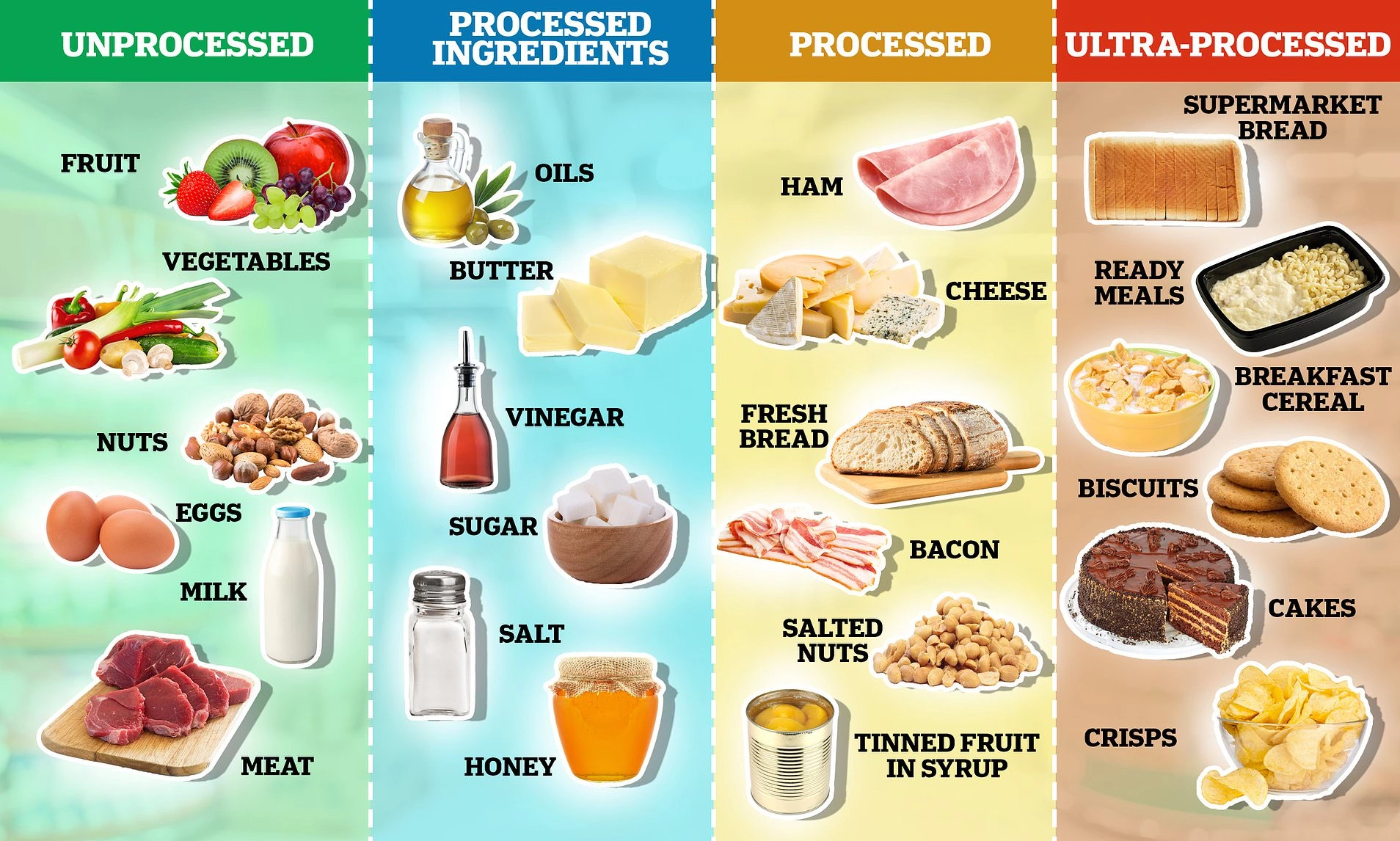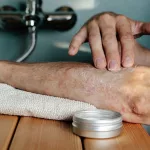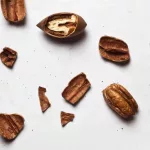
Why This Matters
Let’s just start here: imagine rolling out of bed and actually having enough energy to do what you want. None of that groggy, foggy sigh. Less bloating, fewer cravings, and your mood… a little more even. Sounds dreamy? That’s often what happens when you cut down on the list of ultra processed foods to avoid. This isn’t just some health trend—junk food and hidden additives are quietly stealing your shine, one snack at a time.
I’ve spent years chasing “healthy” options at the store, only to realize that most of them are packed with industrial magic tricks—flavors and colors designed by people in lab coats, not farmers. We get tricked… the package says “wholesome” but the ingredient list reads more like a chemistry exam. If you’ve ever felt like your healthy eating is derailed by mid-afternoon crashes, sugar cravings, or mystery skin flare-ups, you’re not alone.
Where Are They Hiding?
Here’s a rhetorical question for you: How is it possible that you can walk into a grocery store, fill your basket, eat three meals, and feel hungrier and more tired than ever? Yep. That’s the magic of ultra processed foods list—they make up over half the calories eaten by adults in places like the U.S. and U.K. (CDC research here backs this up). Adults get about 53% of their daily calories from these foods. Kids? Nearly 62%. That’s… a lot.
They’re lurking in places you’d never expect: lunch wraps, “healthy” breakfast bars, deli fridge salads, freezer meals, even that supposedly “natural” juice box. I once crunched into a “protein granola bar” on a hiking trip, only to wonder why I felt ready for a nap, not another mile. Spoiler: It was basically glorified candy, disguised as trail fuel.
So What Are Ultra Processed Foods?
Let’s demystify it, quick and simple: Ultra processed foods are usually made in factories, not kitchens. The ingredients list includes stuff you’d never find at home (like maltodextrin, carrageenan, or “natural flavors”), and they’re designed to last forever—or at least longer than your willpower. Researchers call these “industrial formulations,” and the NOVA system lumps them into the highest (or, well, lowest) category of food processing.
Need help sorting out what’s what? You might like this step-by-step breakdown: How to identify ultra processed foods.
Sneakiest Offenders
All right, time for the nitty gritty. What exactly should you be keeping off your plate if you want the biggest health upgrade? Here’s your friendly, full-disclosure list of ultra processed foods to avoid, drawn from recent studies, real dietitian advice, and a dash of personal pain (and now, wisdom.)
Sugary Drinks: Sip and Crash
First up, the obvious villain—sodas and sugary drinks. But wait, it’s not just Coke or Fanta. Energy drinks, vitamin waters, sweet teas, and even some fruit “juice” blends sneak in mountains of added sugars, chemistry-set sweeteners, and artificial colors. My old habit of “hydrating” with sports drinks after a sweaty yoga session? Big yikes—felt worse, not better, headache and all.
Sugary drinks are the #1 UPF “danger zone” found in major research (as this roundup shows). Why? They spike blood sugar, then leave you hungrier… and thirstier. Also, they’ve been tied to heart disease and early-onset diabetes. Not a win.
Try this swap:
| Instead Of | Grab This | Why? |
|---|---|---|
| Energy drink | Sparkling water + citrus | Zero additives, still fizzy fun |
| Bottled sweet tea | Hot or iced green tea, unsweetened, add lemon | Boost antioxidants, avoid sugar rush |
Honestly, the change in my afternoon energy after this swap was wild. No more 3pm headaches. Try it, you’ll see.
Processed Meats: Danger Between the Slices
If you’re a sandwich fan, I totally get it. But deli meats, hot dogs, bacon, and sausages are some of the worst offenders—overloaded with salt, preservatives (like sodium nitrite), and saturated fat. These are easy, tasty, and… a total energy zapper. The biggest wake-up call? A family member (fine, it was me) feeling sick after eating a week’s worth of “turkey” wraps. Doc said: “Maybe ditch the deli aisle.” I did. Suddenly, less bloat, less fog.
Studies show these meats raise your risk for heart disease, high blood pressure, and even cancer (British Heart Foundation explains it here). And honestly, it’s not a small risk.
Want an easy fix? Batch-cook some fresh chicken, slice it, and store it in the fridge. It’s tastier, and you’ll know exactly what’s in it.
Salty Snacks: One Is Never Enough
Potato chips, flavored crackers, extruded cheese puffs, pretzels… You get the idea. Open a bag and, poof, it’s gone. But why do we never feel satisfied (or proud) after? The secret’s in the mix: perfect blend of salt, sugar, industrial fats (sometimes “vegetable oil blends”), and artificial flavors that spark intense cravings in your brain.
These are not just empty calories—they’re a genius design to make you eat more. Ever found yourself eating chips distractedly, only to wonder where the rest of the bag went? Been there… like, last week.
Snack attack? Go for roasted chickpeas, lightly salted popcorn, or—my fave—a bowl of berries. That crunch can come from real food, promise.
Frozen, Ready-To-Eat, and Instant Meals
You’re tired, you want dinner in five… pre-made lasagna, pizza pockets, or microwave dinners feel like a lifeline. But most of these rely on UPF magic: preservatives, fake “cheese,” chemical stabilizers, and more sodium than you need in a day. Ever noticed post-frozen pizza bloat? That’s all the sodium and, well, “stuff.”
A recent review in The BMJ suggested people eating the most UPFs had a 50% higher risk of dying from heart disease, and a 12% higher risk of diabetes. The worst culprits for most health damage: those ultra-processed convenience meals and snacks.
Easy homemade swap:
- Batch cook chili or curry on the weekend, portion it out, and freeze. Real food, 5 minutes to dinner, zero regrets.
- If that’s too much, even scrambled eggs and toast is miles better for you than a “mystery meat” ready-meal.
Sweet Treats: Sugar, Then Some
Everyone needs a treat. But so much of what we think of as “sweet” these days—candy, packaged cookies, ice cream, breakfast pastries—is just sugar with a fancy wrapper. Add in the artificial colors, emulsifiers, gums, and “creams,” and you’re eating something no home cook could make.
Funny story: I used to buy “low-fat” ice cream each week… said no one on their deathbed, ever. But then I read the label. More gums and stabilizers than actual cream. After I quit, real vanilla ice cream (the kind grandma would have recognized) tasted extra special—and a little bit actually satisfied me.
Want better? DIY fruit-and-yogurt parfaits, actual chocolate (the kind that snaps), or homemade baked goods with simple ingredients. Serious mood boost, fewer crashes.
Cereals, Breads, Breakfast Bombs
No shade to the morning rush—sometimes you just need food, fast. But if your breakfast comes in a colorful box or wrapper? Deep breath. Most boxed cereals, store-bought muffins, mass-produced breads, and “grab-and-go” oat packs are ultra processed to the max: added sugars, industrial oils, stabilizers, every vitamin “put back in” after being stripped out.
This one stung for me. I loved my morning muffin and “whole grain” toast. Until I realized that many mass-produced breads have more sugar and preservatives than some cookies, according to the NHS. That “whole grain” taste? Nah. It’s more chemistry than bakery.
Healthier? Overnight oats you make yourself. Sliced fruit, sprinkle of seeds. Or even—gasp—a simple egg.
Common Ultra Processed Foods to Avoid:
- Sugary drinks: sodas, energy drinks, bottled “juices”
- Packaged snacks: chips, crackers, extruded cheese products
- Frozen/ready-to-heat meals: pizza, pasta, microwaveable dinners
- Processed meats: deli cold cuts, hot dogs, bacon, sausages
- Pre-packaged baked goods: muffins, cakes, donuts
- Sugary cereals, flavored instant oats
- Ice cream with more additives than dairy
- Flavored yogurts full of sugar and fillers
(You’ll find a longer Ultra processed foods list over here, and it’s updated regularly as new Frankenfoods hit the shelves.)
But… Do They Actually Hurt Us?
Let’s keep it real: not everything processed is evil. But research on over 10 million people found that eating more UPFs hooks you up with an increased risk for not just one, but thirty-two separate health issues: heart disease, type 2 diabetes, certain cancers, depression, sleep disorders. Even early death. (Yeah, yikes.)
One huge review showed people who ate the most ultra-processed foods were about 50% more likely to die from heart issues, a whopping 48–53% greater risk for anxiety and mental health struggles, and a significant bump in diabetes risk.Consistent evidence here. That’s too much to ignore, right?
It’s not just about the “bad for you” stuff added in—when you eat lots of UPFs, you crowd out genuinely nourishing foods. Less fiber, fewer healthy fats, almost no vitamins or minerals your body actually needs.
How to Spot and Dodge UPFs (Without Losing Your Mind)
Ever stared at a food label and felt like you needed a PhD in biochemistry? Same. Here’s a less stressful approach:
- If it has more than 5 ingredients—and you don’t recognize some? That’s a red flag.
- Words like “emulsifier,” “maltodextrin,” “artificial flavor,” or “color E…” are your clue it’s a UPF.
- If it promises “fresh baked” and lasts three months? Science, not sourdough.
Still stuck? The full guide on How to identify ultra processed foods will walk you through label decoding.
Honestly, after a few grocery trips, you’ll start spotting UPFs like a food-detective. Promise.
What Happens When You Cut Them Out?
Here’s the cool part—and I say this from real (sometimes messy) experience. You don’t have to be perfect. Just pick one swap at a time. Swap a sugary drink for water. Trade chips for nuts or fruit. Ditch deli meat for home-cooked chicken or lentil salad.
The results creep up quietly: Steadier moods. Clothes fitting better (without even trying). I noticed my Sunday slump evaporated, my coffee addiction dialed down, and weirdly, my skin got glowier. Other people report better sleep, clear thinking, even fewer aches. Everyone’s path is different, but the pattern? Always better.
It’s not about eating like a saint. It’s about giving your body a break from the constant chemical storm—and letting it remember what “real food” actually tastes like.
Your Next Steps: One Change Today
Cutting out ultra processed foods isn’t “all or nothing.” Take it from someone who’s tried the cold turkey approach (lasted two days… hello, pizza cravings) and the “one meal at a time” plan (so much more doable!). Start simple: scan your snack. Maybe swap your soda. Make your lunch at home, just once this week. Build up, not out.
Use the Ultra processed foods list to check a few favorites, or print it out and hang on the fridge. And, if you’re ready to get a bit nerdy, try the hands-on tips in How to identify ultra processed foods—they make grocery trips faster and less overwhelming.
What are your biggest snacks-that-should-go wish-list items? Any swaps that totally changed your energy? Drop a comment, or just try one thing and see if you notice any changes this week. Imagine how you’ll feel next month—or even next season. Honestly, you deserve to find out.
Hey, thanks for reading. I hope this list of ultra processed foods to avoid helps you dodge the worst, enjoy the best, and find the healthiest, most energetic version of yourself—one bite at a time. You got this!


















Leave a Reply
You must be logged in to post a comment.